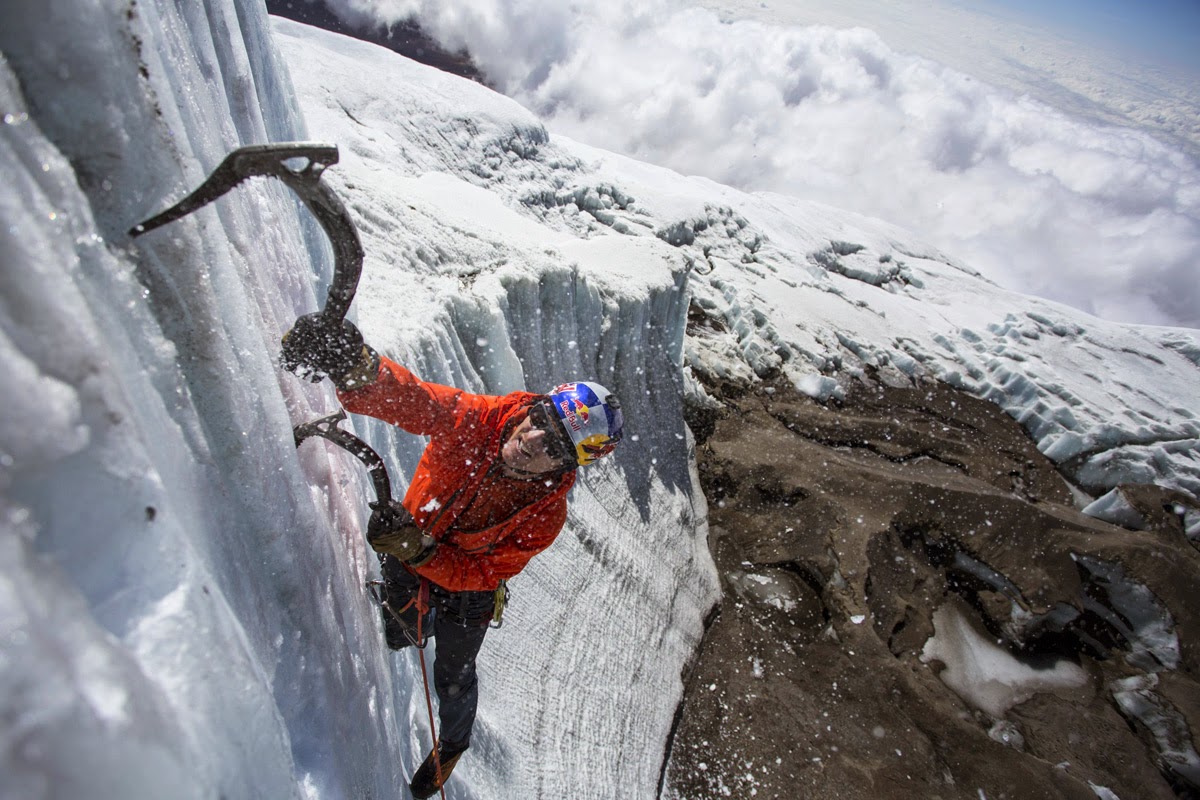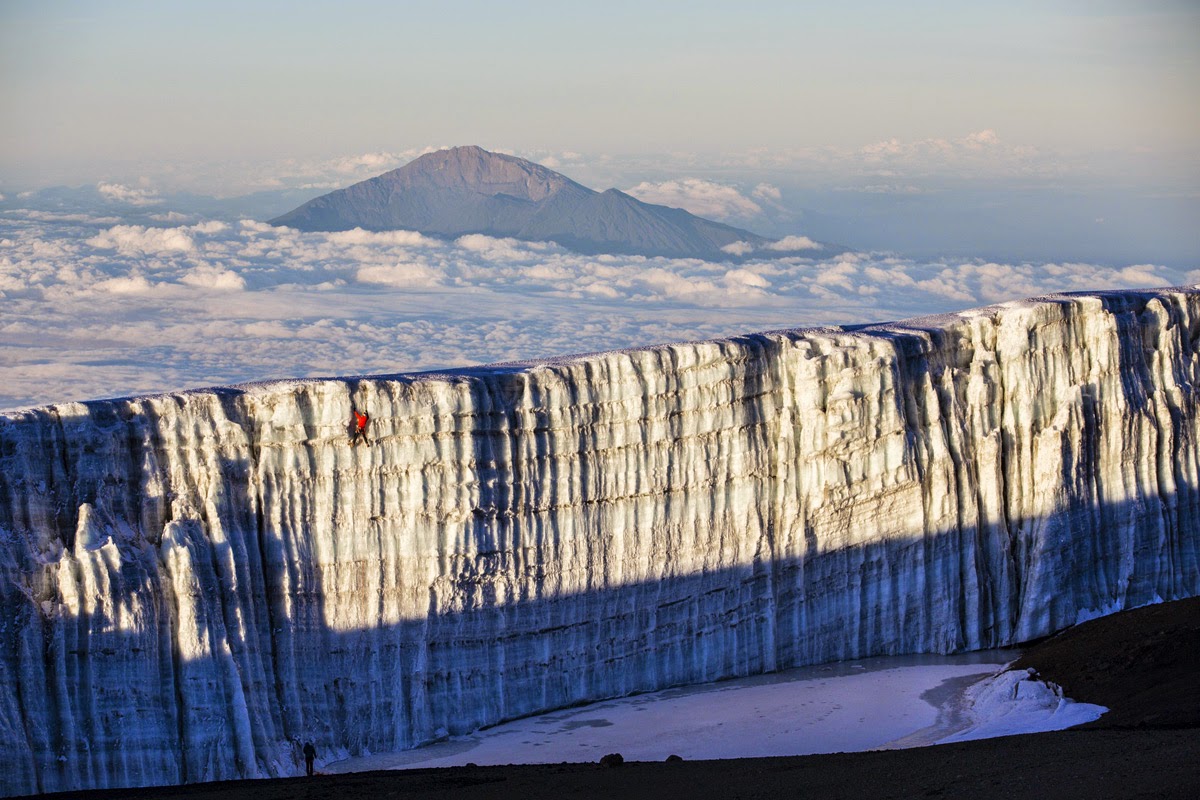Ice Climbing the Glaciers at the Top of Kilimanjaro
Late last year, National Geographic Adventurer of the Year, Will Gadd, ascended to the highest point in Africa, taking matters one step further by climbing the famous glaciers found at the peak of Mount Kilimanjaro in Tanzania.


At 19,341 ft (5,895 meters) above sea level, Kilimanjaro is the highest mountain in Africa and the highest free-standing mountain in the world. According to NASA:
“Between 1912 and 2011, the mass of ice on the summit decreased by more than 85 percent. Researchers say it’s no longer a question of whether the ice will disappear but when. Estimates vary, but several scientists predict it will be gone by 2060.”

According to The Guardian, Gadd set out to climb ice on every continent about 10 years ago. With only Africa and Antarctica left on his list, he opted for Africa as he wasn’t sure how long the glaciers would be around for. Although the ice atop Kilimanjaro has been there for over 12,000 years it could all be gone in a matter of decades.



Gadd tells Red Bull that the altitude made the climb much more challenging. As for the weather, Gadd explains:
“We would literally climb stuff that wouldn’t be there the next day. I’ve climbed a lot of ice, but this was the last of its kind. The glaciers are just small remnants truly in their last gasp. I felt very lucky to be there!”



Source: Twisted Sifter


At 19,341 ft (5,895 meters) above sea level, Kilimanjaro is the highest mountain in Africa and the highest free-standing mountain in the world. According to NASA:
“Between 1912 and 2011, the mass of ice on the summit decreased by more than 85 percent. Researchers say it’s no longer a question of whether the ice will disappear but when. Estimates vary, but several scientists predict it will be gone by 2060.”

According to The Guardian, Gadd set out to climb ice on every continent about 10 years ago. With only Africa and Antarctica left on his list, he opted for Africa as he wasn’t sure how long the glaciers would be around for. Although the ice atop Kilimanjaro has been there for over 12,000 years it could all be gone in a matter of decades.



Gadd tells Red Bull that the altitude made the climb much more challenging. As for the weather, Gadd explains:
“We would literally climb stuff that wouldn’t be there the next day. I’ve climbed a lot of ice, but this was the last of its kind. The glaciers are just small remnants truly in their last gasp. I felt very lucky to be there!”



Source: Twisted Sifter
Related Posts:
Ice Climbing the Glaciers at the Top of Kilimanjaro
 Reviewed by Eli Snow
on
3:57 AM
Rating:
Reviewed by Eli Snow
on
3:57 AM
Rating:
 Reviewed by Eli Snow
on
3:57 AM
Rating:
Reviewed by Eli Snow
on
3:57 AM
Rating:







No comments